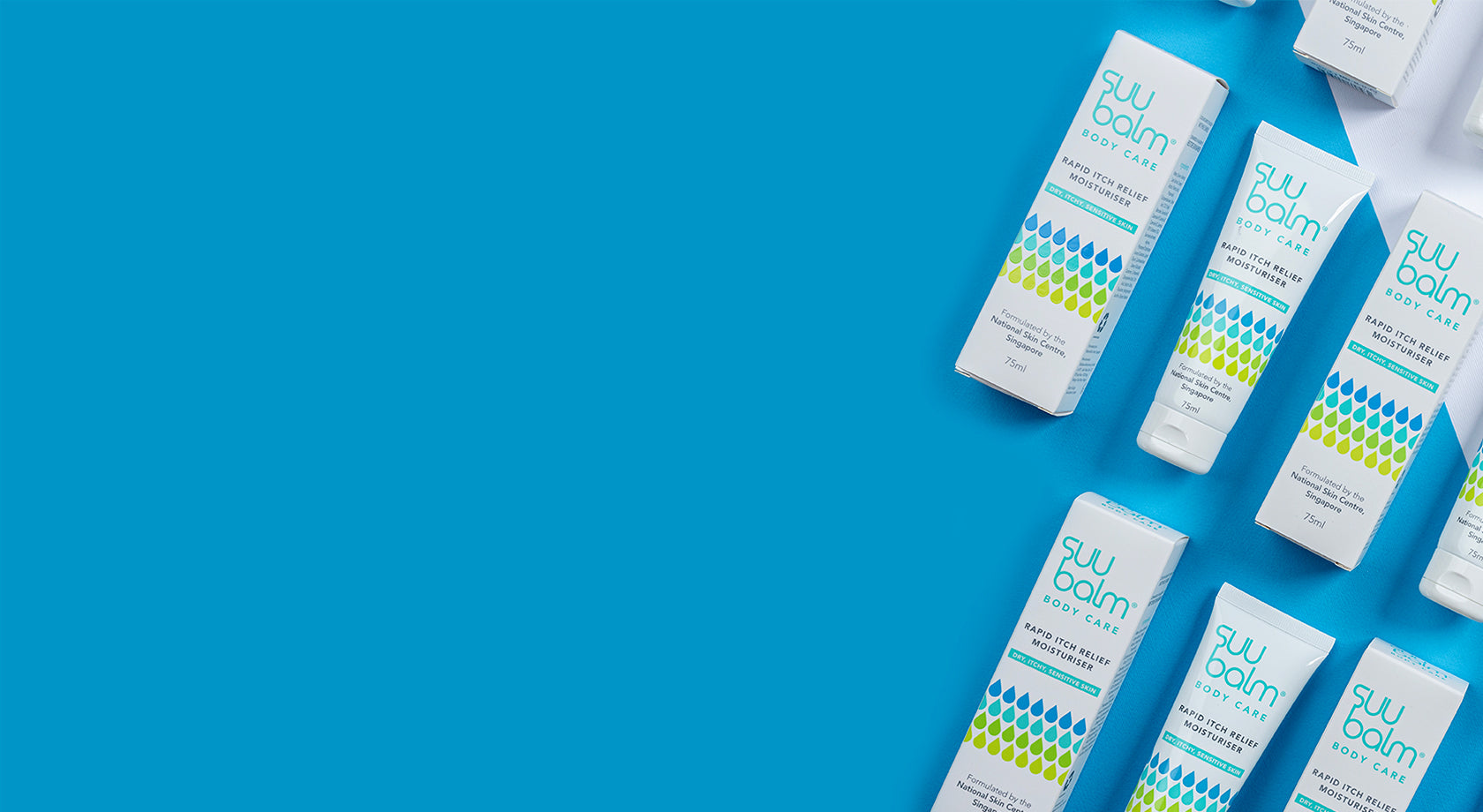Article from: The Asian Parent
Eczema affects about 20% of school-going children in Singapore and can often cause
flare-ups, inflammation and itchy skin.
Eczema is a very common condition, particularly in children, affecting up to 20% of
kids globally. The condition affects the skin, causing a red, itchy, flaky rash that can
occur on any part of the body. In children, it commonly appears on the face, arms and
legs.

Source: iStock
The rashes are not necessarily always present; often they come and go. These are
often referred to as “flare-ups”.
When eczema occurs, the very outer layer of the skin called the stratum corneum of
the epidermis or the skin barrier, doesn’t function properly in keeping moisture in, and
irritants out.
In eczema skin, this barrier is porous or not tightly sealed, allowing irritants in and
provoking a reaction from those with an “over-sensitive” immune system. Common
symptoms include itch—which in kids may be extremely difficult because it means
scratching away at night with some leading to skin bleeding which eventually disrupts
sleep and negatively affects both the child’s and the parents’ quality of life.

Source: iStock
Eczema tends to run in families so if one or both parents have it, there is a good
chance their child will have it.
Eczema may develop at any age, but typically in babies from 3-4 months old onwards;
some children will “grow out” of the condition as they get older. However, for others,
it is not the same—for reasons yet to be defined by science.
So, what should you do if your child develops a rash that doesn’t go away, or is itchy
and irritating? You should first bring your child to a doctor who can help identify the
nature of the rash. If it is diagnosed as eczema, the treatment will involve a two-step
process:
1. Eczema in kids: The acute phase
In this phase, the condition usually flares up and the focus is on trying to get the
symptoms under control:
• There is an immune system reaction in eczema, which results in inflammation
of the skin. As such, steroid creams or eczema cream which are anti-inflammatory are often
used to control the inflammation. Many parents are afraid of the long-term
effects of steroids, but when used right, the risk of side effects can be
minimised.
• To help soothe the dryness of the skin, you need to moisturise your child’s
skin regularly, as often as five times a day!
• To stop the itch, creams that combine cooling menthol with a moisturiser, help
to relieve the itch and break the itch-scratch cycle. This not only prevents
physical damage to the skin from excessive scratching but also means your
child will sleep better and suffer less stress.
• If there is a skin infection, then an antibiotic may be required.
• If the flare-up is severe, then more intense therapy may be required and your
child may have to be referred to a dermatologist for specialist care.
2. Eczema in kids: The chronic phase
In this phase, we try to reduce or prevent flare-ups from occurring. While no cure has
yet been found for eczema, there are strategies (other than any prescription medicines
that your doctor might prescribe) that minimise the frequency of flare-ups, such as:
• Moisturise regularly
In between flare-ups, the skin barrier is still defective and vulnerable to irritants, thus
using a moisturiser daily (at least twice a day) is advised. Moisturisers containing
ceramides are particularly effective, because eczema skin is lacking in ceramides
(ceramides are substances normally present in the skin, are key to the normal
functioning of the skin barrier). As such, applying ceramide to the skin helps to
restore the barrier to its healthy state, where it can resist irritants and retain moisture.
• Use a gentle body wash or cleanser
Harsh soap is not recommended for eczema skin as it tends to have alkaline, which
can promote the growth of bacteria on the skin. As such, when choosing a body wash
or cleanser, check that the product has a slightly acidic pH of between 5 and 6.5. Note
that many body washes contain ingredients—such as sodium lauryl sulfate,
perfumes/fragrance and parabens—that are potentially irritating to eczema skin.
Choose body washes that are free of irritants that are gentler on the skin such as Suu
Balm Kids Body Wash.
• Minimise exposure to triggers of your child’s eczema
This is important, but very hard to do! In general, reducing stress is important (try to
create a happy, positive environment for your child), but also identifying any potential
food triggers and avoiding these foods, using gentle detergents, reducing dust in the
home, keeping a stable temperature in the home, and reducing exposure to pollution
are all positive steps you can take to reduce exposure to triggers.
Finally, be reassured that you are not alone. Eczema is a common condition and there
are many parents out there who are also dealing with it. There are various patient
support groups that have the necessary tools and resources for optimising your child’s
care, and also provide emotional support.
This article was contributed by Dr John O’Shea, Co-Founder of Good Pharma
Dermatology. Good Pharma Dermatology produces a brand of consumer healthcare
products, including Suu Balm.
Written by
Shreya Jagdish from The Asian Parent







